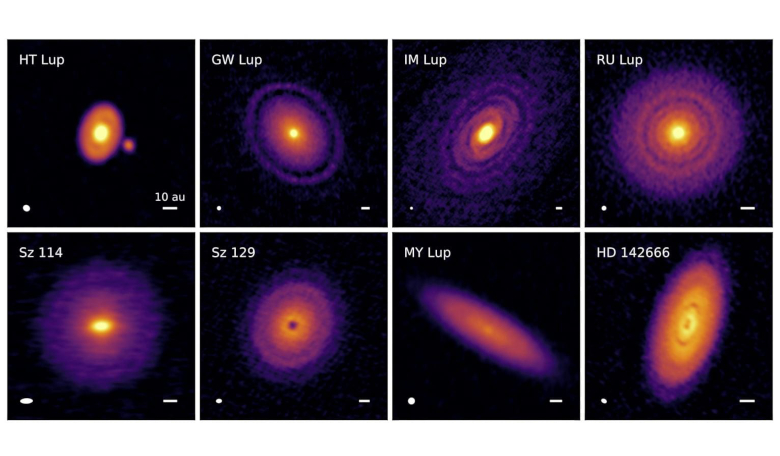When the Atacama Large Millimetre/Submillimetre Array (ALMA) started pointing its dishes at the disks where planetary systems are born – protoplanetary disks – the stunning, high-resolution images it returned showed a recurring sight; substructures within the disks including prominent rings and concentric gaps, which appear to be the hallmarks of evolving planets.
Now, new research into the formation of our Solar System suggests features such as these triggered the formation of the giant planets and split the material in our disk into non-carbon and carbon-rich regions; a division that is seen in meteorites found on Earth.
Most meteorites that find their way to our planet come from asteroids located in the main asteroid belt between Mars and Jupiter and have traditionally been viewed as fragments from bodies that formed where we find them today.
Over the years, scientists have discovered that the meteorites can be separated into two distinct classes based on the isotopes contained within them; carbonaceous (CC) and non-carbonaceous (NC) meteorites (isotopes are variants of a particular chemical element which differ in neutron number).
Carbonaceous meteorites include some of the most primitive known meteorites and are believed to have not undergone any significant heating since they were formed. These types of meteorite are enriched with titanium, chromium and molybdenum, whereas non-carbonaceous meteorites are not.
Researchers refer to these differences in isotopic composition as the NC–CC dichotomy, a phenomena which most likely reflects the separation of the early Solar System into an inner and outer disk separated by Jupiter, which acted as a barrier between the two regions.
However, whether the Solar System started off like that from the beginning or whether something occurred to separate the disk later in its evolution, is not known.
By modelling the growth of Jupiter, two researchers now think they have the answer.
Planets are believed to form by the growth of small pebble-like material that crashes into each other and sticks together until a ball of rock the size of a small planet (a planetesimal) is left. These huge boulders then combine under the force of gravity to form protoplanets – a large planetary embryo that through further collisions can then coalesce to make a planet or the rocky core of a planet if it then evolves further to become a gas giant.
Taking various conditions into account, the models conducted by R. Brasser at the Tokyo Institute of Technology and S. J. Mojzsis at the University of Colorado Boulder, show that the growth of Jupiter from pebble accretion is not fast enough for the planet to act as a barrier and keep the two types of material separate.
Instead, say the duo in their research paper, which was published by Nature Astronomy today, they propose that a long-lived pressure maximum was responsible.
This pressure maximum would also be the site of a high-density region where pebbles and dust particles generally pile up and it either formed in situ around 5 astronomical units (au) near to where Jupiter is, but before the planet formed, or migrated in towards the protosun, ending up at this location.
This ring of high pressure almost completely prevented the flow of pebble accreting material from the outer Solar System zones reaching the inner zone where the terrestrial planets grew, say Brasser and Mojzsis. This ring not only created the NC-CC dichotomy as it kept the carbonaceous and non-carbonaceous material apart, but it also kickstarted the growth of Jupiter.
And chances are it was not the only one suggest Brasser and Mojzsis, as these additional rings could have led to the formation of the other giant planets in the Solar System.
Brasser and Mojzsis further add that if the different isotopic compositions of the various CC meteorites reflect to some degree their formation location, then its stands to reason the rocky centres – the kernels – of our giant planets more closely resemble CC meteorites than any inner Solar System object and that the isotopic compositions of the giant planets are distinct from one another.
Their hypothesis could also have implications for other protoplanetary disks that ALMA has observed too.
A number of stars found by astronomers in the Taurus constellation are shown to feature these distinct rings and gaps associated with planet formation and some are spaced such that the distance of a ring to the star, is consistent with the preferred initial configuration of the giant planets in the Solar System say Brasser and Mojzsis.
This could indicate therefore that these nascent systems are growing planets that could end up as large as Jupiter if not bigger.











